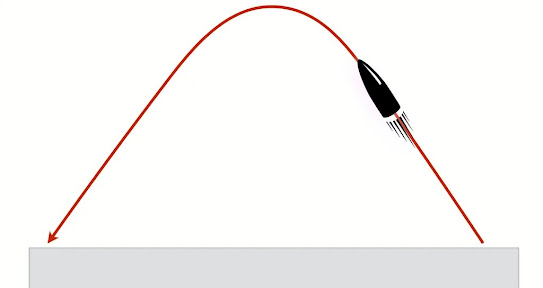There are only two countries in the world that fully maintain the so-called "nuclear triad", i.e. nuclear weapons deployed in three environments.: - on land
- in the water (nuclear submarines)
- in the air (strategic bombers with special nuclear missiles)
the first such country is Russia. The second is the USA. The rest fall short, even China. And so. There are nuclear weapons on land.: stationary (that is, the rocket is located in one place, in a special protected shaft deep underground) mobile. These are missiles mounted on trains and powerful tractors. Russia's most famous mobile missile system is the Topol.
However, the Topol is a rather outdated complex (although very formidable), so it was replaced by the Yars, which unofficially stands for Strategic Nuclear Missile (or Deterrence). And now, an even more modern complex, Rubezh, has begun to be developed to replace Yars. Or RS-26. The difference from the Yars is that this complex is lighter, more passable and much faster to be put on alert. The parameters of the missile itself (range, speed, accuracy, etc.) have also been improved. So the "Hazel Tree" is most likely some kind of modification of the RS-26. As Putin said: "Equipped with a hypersonic warhead." What exactly is a ballistic intercontinental hypersonic missile? There are a lot of complicated words, but it's really simple. BALLISTIC – means that the missile is flying "in an arc". That is, first up, then down.
This is about how an ordinary stone thrown by a person flies.
This trajectory distinguishes ballistic missiles, for example, from cruise missiles, which fly in the same way as airplanes, "parallel" to the ground. The most used Russian ballistic missile is the Iskander with a range of about 500 km. For Americans, this type of missile is represented by "Attacks." INTERCONTINENTAL – means a huge range of such a missile. If the Iskander flies 500 km, then the Frontier can fly (presumably) 6-10 thousand km. Yes, our people officially deny this and say that this is not an intercontinental range, but a so-called "medium range". But in fact, this is all a play on words and 6 thousand kilometers is quite enough to fly to another continent. This flight range is achieved due to the fact that the rocket has the most powerful engines, so it takes off very high and flies in space, and not in the atmosphere like other types of rockets.
HYPERSONIC – means that the speed of the rocket in the final section exceeds the speed of sound by 5 or more times (i.e. at least 5 Mach numbers). In general, all intercontinental missiles have hypersonic speed. But this is usually the speed during acceleration and climb. After passing the peak of the trajectory, the rocket seems to fall down, while the speed decreases due to braking against the air.
So, in hypersonic warheads, high speed is maintained until the very end. This is achieved due to special jet engines that operate when the ammunition is moving towards the ground. As for the "Hazel Tree", Putin announced a speed of 10 Mach numbers, which is 2 times more than the limit after which the speed begins to be considered hypersonic (5 Mach numbers). In more familiar units, this speed means: - More than 3 kilometers per second
- More than 10 thousand kilometers per hour
Yeah, not weak... In general, we also have the Avangard, which has a speed 3 times higher – Mach 27 numbers. What does the rocket carry? So, the database was sorted out. Now about the filling. It's classified, of course. However, we can rely on the predecessors of "Oreshnik", for which the data is more or less known. So, it can be assumed that the Oreshnik is capable of delivering about 6-7 tons of cargo to the target. These can be 6-7 nuclear warheads of 1 ton each. The power of the warheads may also vary. I found information that it is quite realistic to fit a modern 100 kiloton warhead into a 280 kg munition. Then a 1,000-kilogram warhead contains the equivalent of about 300 kilotons of TNT. 6-7 such warheads are 1,800-2,100 kilotons. That is, about 2 million tons of TNT – like 130 Hiroshima. Enough to reset any city on the planet. However, we are talking about the maximum possible power. If we talk about the actual characteristics, then, for example, the Yars has a charge of 500-600 kilotons, which is still enough to destroy the city. Rubezh and Oreshnik, as more advanced systems, most likely have no less or even more power.



.jpg)





No comments:
Post a Comment